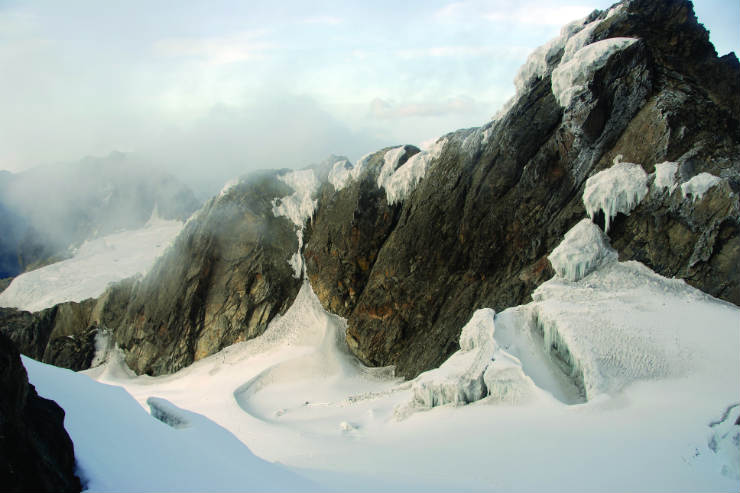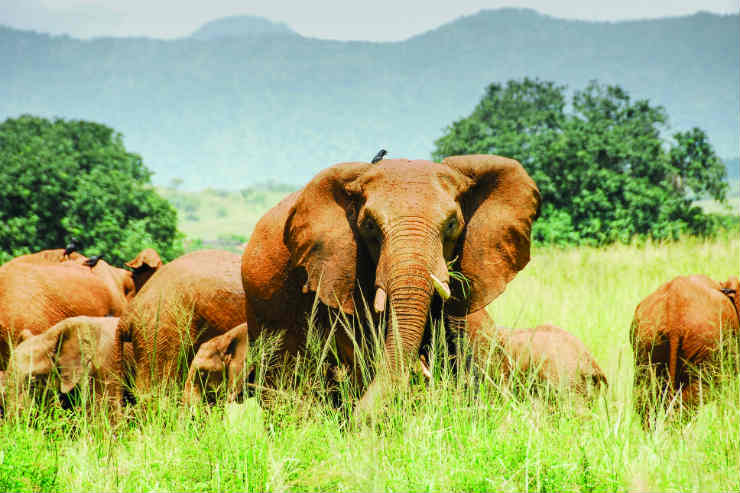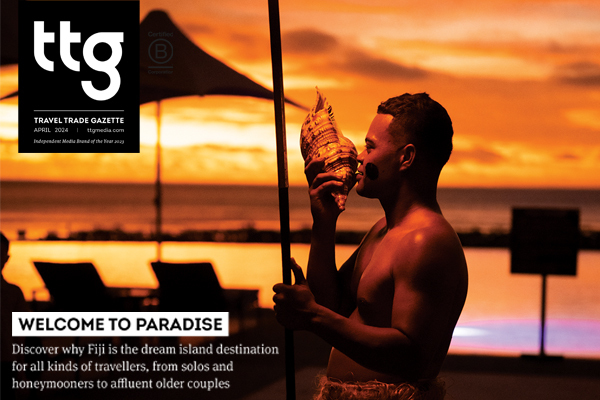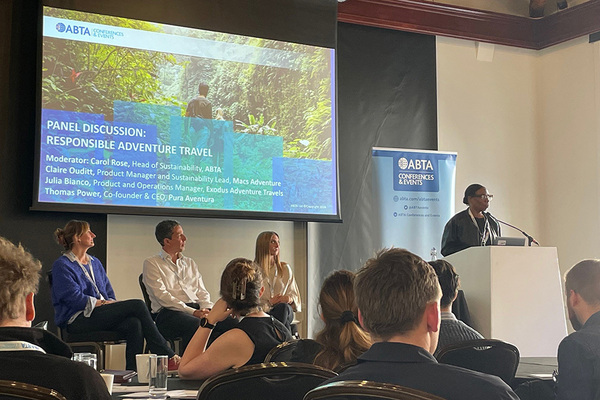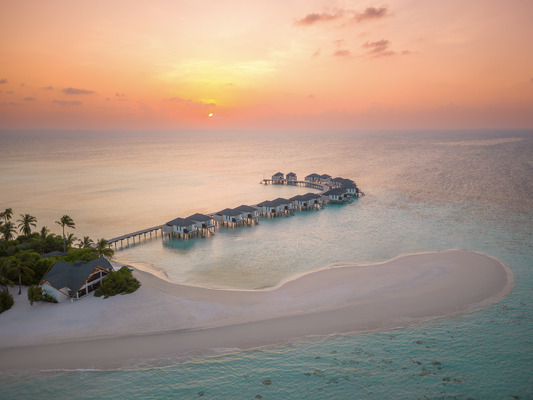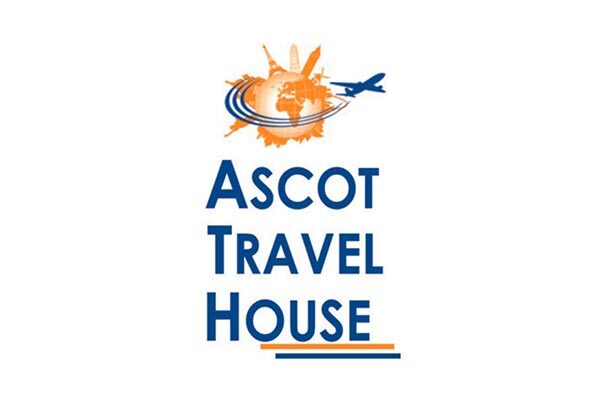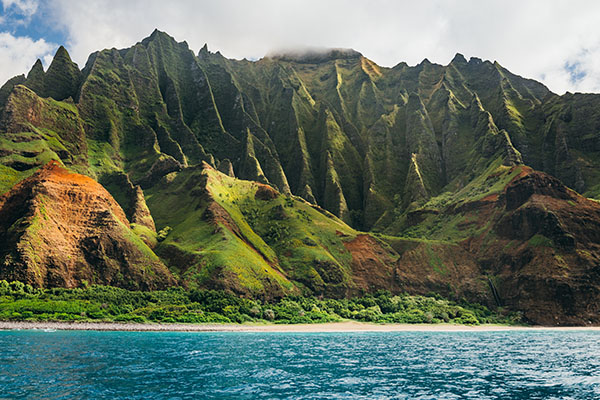Going wild in Uganda
 TTG Staff
TTG StaffGorillas may be the star attraction of a trip to Uganda, but Sarah Gilbert covers that there’s much more to the country than just the great apes.
With his broad shoulders and commanding presence, he draws my attention from the start. And when his deep-set hazel eyes hold my gaze for an instant, I am transfixed. Bikingyi, however, is completely indifferent to the arrival of our small posse of Homo sapiens. The undisputed alpha male lies on his back, arms behind his head, while one of his girlfriends fusses around him.
Nearby, an adorable woolly-haired youngster gleefully beats his tiny chest, bounding around the original jungle gym demanding attention before being gently scooped up by his mother and carried away piggyback style.
Meeting a gorilla family is one of the ultimate wildlife experiences and understandably tops many bucket lists. Traditionally, contact is limited to just one hour, but thanks to Uganda Wildlife Authority’s new Gorilla Habituation Programme, I am able to spend four whole hours with a semi-habituated group just 18 months into the process.
There are only 800 or so critically endangered mountain gorillas left on the planet and around half of them live in Uganda’s Bwindi Impenetrable Forest. This primeval place is like a magical set from a Tarzan film, where vegetation drips from towering trees, thick lianas coil and twine around branches and the trek to reach the gorillas can take anything from 40 minutes to four hours.
On the habituation programme, I join the trackers in the search for the gorillas, and it proves to be a far wilder, less planned experience, as I fling myself down vertiginous slopes, clamber over tangles of roots and duck beneath unruly branches, nearly losing a boot to the thick mud as I go.
World of wildlife
While gorilla tracking may be this landlocked East African country’s star attraction, it’s by no means the only one. Uganda has wild and habituated chimpanzees in Kibale national park, tree-climbing lions in Queen Elizabeth national park, elusive leopards, and hippo-filled rivers, not to mention a dazzling array of birds.
And in “the pearl of Africa”, you can hike the snow-topped Rwenzori Mountains, ride adrenaline-inducing rapids on the Nile, and cruise on Lake Victoria, Africa’s largest, shared with Kenya and Tanzania.
But my focus is wildlife. Scenic Queen Elizabeth national park is one of Uganda’s most popular safari destinations, with diverse ecosystems ranging from the crater-dotted foothills of the Rwenzori, to sun-scorched savannah, wetlands and gallery forest.
From the Mweya Safari Lodge jetty, I join the twice-daily boat trip that drifts slowly down the Kazinga Channel, a 25-mile waterway that links Lake George to the east and Lake Edward to the west.
As I watch a yellow-billed stork stalking through the shallows and a jewel-coloured malachite kingfisher nosedive for fish, a pair of majestic sea eagles settled on a branch to survey their terrain.
A large pod of harrumphing hippos stare curiously at the boat until they disappear underwater, bobbing up again as soon as we pass. To my delight, I catch sight of one emerging from the water. Surprisingly nimble, it runs alongside the boat in a flash of grey and pink, wet skin glinting in the sunlight.
Our guide points out a well-camouflaged monitor lizard basking on the riverbank. But I don’t need him to spot the bachelor herds of grumpy-looking buffalos. Or the 20 or so elephants that lumber towards the water, carefully shielding a baby that turns and trumpets sweetly in our direction – followed by the far more fearsome matriarch that marches forward, enormous ears flapping and trunk waving, until we’re close enough to see her mud-caked skin.
Conservation efforts
Before I leave Mweya, I spend the afternoon with Dr Ludwig Siefert from the Uganda Carnivore Program. Along with his small team, he’s working hard to conserve the predator numbers within the park, and an outing with them involves going off road and virtually guaranteed sightings of the collared big cats. Our first encounter is with a shy young leopard. Sheltering with her cub under a particularly thorny looking bush, she is almost impossible to spot without GPS.
Later, we pull up what seems perilously close to a snoozing, straw-coloured lion, almost camouflaged by the tall grass. I watch enthralled as she stands up and slowly stretches her powerful limbs, revealing formidable fangs in a gaping yawn before she flops back down again.
Then it is on to the Ishasha Plains, in the south of the park, home to one of the world’s two tree-climbing lion populations. While I keep my eyes peeled for the lions, I spy a baby hyena that has crept out of its dark den to doze in the sunshine. While the park lacks
giraffe and zebra, there are plenty of antelope to keep the predators happy, including large herds of the doe-eyed Ugandan kob.
No one knows exactly why the lions here climb trees. Some believe it’s to escape biting insects, or the heat of the day. And when I come across a shaggy-maned lion sprawled along a branch, plate-sized paws dangling either side, he certainly looks as if he’s taking his siesta.
I end my trip getting up close to our closest animal cousins, chimpanzees. In Kibale national park, UWA has launched a nest-to-nest programme that means that you trek for longer and spend more time in the company of chimps.
It’s worth the effort. Wild chimps can live for around 40 to 50 years and, like the characters in a long-running soap opera, power struggles and sexual politics are all part of their daily routine. And I am getting to watch it live. Unfazed by the arrival of the paparazzi, Tottie and Enfuzi both mug happily for the cameras, giving us left profile, right profile, with startlingly familiar expression and mannerisms. Then it is time for a spot of grooming.
To reach them, I have to walk for around an hour along a winding forest path, up a gentle incline and then, when the muddy slope becomes almost vertical, I begin to grab at any available root and branch to haul myself up. Squinting upwards through the foliage, I can make out a chimp nibbling on the tiny skull of a colobus monkey. Suddenly, a distant but piercing pant-hoot reverberates through the bush. It is a spine-tingling call to hunt, which gives me chills, despite the steamy heat. Just one call at first, then another, until the whole troop has joined in, and the cacophony grows louder and more frenzied as, one by one, they swing acrobatically through the trees and out of sight.
Uganda certainly isn’t your ordinary safari destination. To have such unique animal encounters in one relatively small country is thrilling. A few hours will never be enough, but it’ll be a time that wildlife lovers will remember for the rest of their lives.
Book it: Natural World Safaris offers a nine-night Chimps, Game & Gorillas Safari. Prices start from £5,375pp sharing in low season, including flights to Nairobi on Kenya Airways, a one-way flight from Kisoro to Entebbe, all transfers, and accommodation, mostly full board.
Normal gorilla tracking permits cost $600 and gorilla habituation permits cost $1,500.
Essential info
- UK citizens can get a 30-day e-visa at visas.immigration.go.ug, currently $50. A standard-single entry visa can also be obtained on arrival and must be paid for in US dollars
- Uganda is a year-round destination – however, tell clients that January and February (hot and dry) and June to August (still dry but cooler) are the best months for tracking gorillas. March to May and October/November are the wettest months.
- The minimum age for gorilla tracking is 16 and you need a reasonable level of fitness and to be willing to scramble up and down muddy slopes. Contribute to the local community by hiring a porter to help you.
- Recommended immunisations: hepatitis A, typhoid, tetanus, diphtheria and yellow fever – a valid yellow fever vaccination certificate needs to be shown on arrival. There’s also a risk of malaria so contact your doctor for the recommend prophylaxis and you should cover up to avoid bites.


